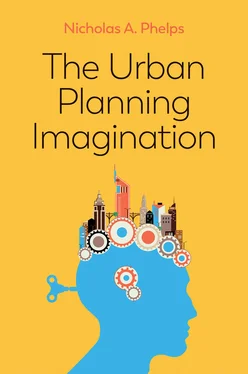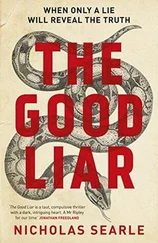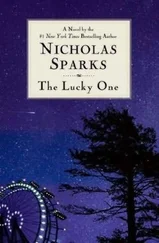It is clear both historically and in the present that our cities have never been, and can never be, entirely closed or disconnected places. They are shot through with physical, virtual and remembered references, relations and connections to other places. It is vital, then, for the urban planning imagination to bring to bear a perspective on the seemingly general or universal nature of our urban existence. This sense of the partial convergence on more or less universal elements of urban planning is familiar to us in the shorthand term ‘globalization’.
If urban planning is an activity involving the shaping of places, then it is an act of imagination that must seek to reconcile these two geographical perspectives. It is a thoughtful activity in and through which what Doreen Massey (1989) termed a relational or global sense of place might be mobilized. Thus, in chapter 2I will elaborate how a geographical perspective reveals the ‘betweenness of place’ (Entrikin, 1991) as both unique and bounded but also permeated by more or less common (cultural, economic, social, environmental) processes and relations. This geographical perspective reveals both the distinctiveness of different planning systems ( chapter 6) and some of the elements of convergence and exchange among them ( chapter 7).
Urban planning’s enduring appeal
Urban planning emerges as an activity that has adapted to changing societal needs and desires, retaining an element of imagination while acting to bind a variety of actors and their interests in efforts to address the substantive challenges associated with human settlement around the globe.
The urban planning imagination’s geohistorical sensibilities make it a particularly powerful and integrative means for solving the complex problems of city building, since these reveal themselves as ones of (spatial) interdependence and indivisibility and (historical) uncertainty and irreversibility (Hopkins, 2001). The urban planning imagination – as something distributed across citizens, clubs and states – emerges as pervasive but more suitably modest (Hoch, 2019: 48) than it has at times been presented as being in statutory practice and university training issuing from the global north.
My celebration of urban planning is not one that rests on the thought that urban planning is somehow an unconstrained act of imagination; it is not. Rather, as I note in chapter 6, urban planning systems and cultures are nested within broader institutional and cultural frames while being an indispensable part of, or foil to, them. As Magnusson (2011: 132) observes, ‘Planning has always been a way of rationalizing politics by rendering it governable.’ Indeed, urban planning has had ‘greatness thrust upon it’ at various junctures. These include, for example, the aftermath of war in the United Kingdom (UK), when urban planning was briefly the means by which the modernization of society was to be achieved (Hall and Tewdwr-Jones, 2020), and the present, with urban planning emerging as the most suitable arena in which to address the effects of climate change and search for sustainable development (Davoudi et al., 2009). At its best, urban planning continues to manifest something of society’s collective conscience in connection with what Rittel and Webber (1973) explain are ‘wicked’ problems.
It has been said that urban planning is a dialectical process (Gleeson and Low, 2000) whose tensions are reconciled in moments in time and place. Often a particular visual (map, diagram, sketch), technique (forecasting, overlays), method (scenario building, collaborative or communicative processes) or principle (sustainability) captures the imagination. At these moments the incredible global mobility of urban planning thought and practice becomes visible. It is conceivable in a world now considerably sped up that those moments in which urban planning gains purchase will be too fleeting to be meaningful. Yet, in other respects, the speed of change makes urban planning an even more important enterprise in the present age, though one in need of rethinking as a joint exercise drawing sustenance from the distributed and pervasive nature of urban planning itself: drawing strength and imagination from the substantive concerns, wisdom and methods found across a range of actors.
The structure of the book
The sketch of the urban planning imagination presented here is one of variations on reasonably common themes: one in which there are not only contrasts between cities and nations but also common pressures upon them, much exchanging of ideas and no small measure of similar – though by no means identical – policies and practices developed and deployed. These contrasts and commonalities are visible across places – cities and nations – and across time in the same place. Geographical and historical perspectives are essential to the study and appreciation of urban planning. To the extent that any individual, white, global-north-rooted male can obtain the knowledge and muster the powers of expression required for a critical international introduction, my short discussion of the urban planning imagination cannot be anything other than partial.
In the following chapter, I begin by offering a partial answer to the question ‘who plans?’. I define urban planning actors in terms of citizens, clubs and states before going on to note the ever more mixed properties of the urban planning imagination apparent within and across these sets of actors. I then depict the close links that planning as a discipline has with the study of history and geography. The urban planning imagination is something which unites historical and geographical sensibilities and animates them with a sense of normative purpose towards the shaping of better/good places. It is a body of thought and practice that is uniquely and purposively integrative and synoptic in its aspirations. In this it has rarely been completely successful, for the shaping of better/good places is a task and work necessarily never quite finished. As one of the most criticized and insecure of disciplines, planning can hardly escape a sense of its own fallibility. If this is one lesson painfully learned, it is one that other disciplines might do well to incorporate a little of.
Chapter 3sets out some of the substantive concerns – shelter, health, mobility, sustainability and economy – that urban planning has had to address. These appear as enduring issues for urban planning thought and practice to deal with. Nevertheless, the precise nature and severity of individual issues and their pecking order continue to alter over time, shaped by circumstance.
Chapter 4reminds us why urban planning has a value. It has a continuing value as a stock of inter-generational knowledge dating back even to humankind’s first settled relationships to nature. There is more than a sense of lessons not learned, things forgotten, wheels being reinvented and history repeating itself here. However, the stock of urban planning’s wisdom continues to grow in ways that will help us with the challenges of place making that lie ahead.
Chapter 5discusses some of the methods associated with urban planning. Something of the enormous imagination of urban planning is again showcased here, from the details of techniques used in particular instances, to the long-term ‘informed speculation’ associated with ‘what-if’ scenarios, to the ways in which we can seek to mobilize the intimate local knowledge and intensely felt needs and desires of citizens. This multiplicity of methods is further evidence of the integrative and synoptic potential of urban planning thought and practice.
Chapter 6seeks to illustrate one aspect of urban planning’s geographical sensibility by drawing attention to the variety of different systems and cultures that exist. Urban planning thought and practice reside within and take their cues from the broader culture and institutional arrangements of societies. The variety of urban planning systems and cultures is itself a stock of accumulated knowledge and expertise, the surface of which has barely begun to be scratched in the extant academic and practice literature. Its full significance is exposed when one realizes that it is the driver of the sorts of international exchanges that I discuss in chapter 7.
Читать дальше












![Nicholas Timmins - The Five Giants [New Edition] - A Biography of the Welfare State](/books/701739/nicholas-timmins-the-five-giants-new-edition-a-thumb.webp)